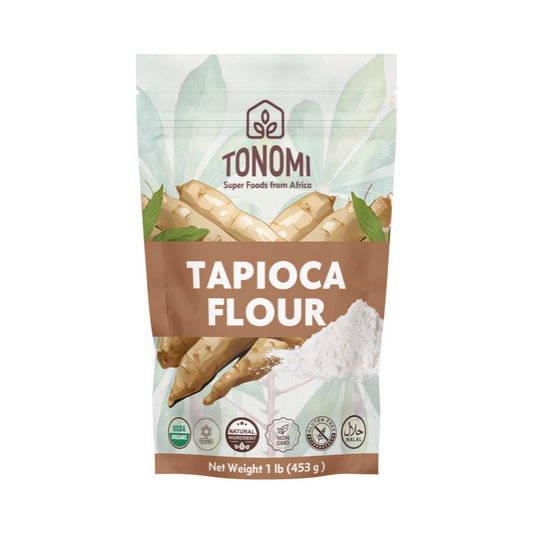Gluten-Free Baking: Tips and Tricks with Tonomi Flours
Gluten-free baking can be a delightful journey, especially when you have the right flours at your disposal. Tonomi Super Foods offers a range of gluten-free flours sourced from Africa, each with its unique characteristics and benefits. Here are some tips and tricks to make the most of your gluten-free baking adventures with Tonomi flours:
1. Tapioca Flour:
- Texture & Taste: Tapioca flour is odorless and tasteless, making it a versatile addition to various recipes.
- Baking Tip: Use tapioca flour to add crispness to your baked goods. It's perfect for dishes that need to be crisp on the outside but light and fluffy inside. If your stew is watery or your pizza crust isn't crispy enough, tapioca flour is the answer.
2. Plantain Flour:
- Texture & Taste: Plantain flour gives your baking a slightly denser texture, capturing the essence of plantains.
- Baking Tip: This flour can be substituted for wheat flour in many recipes. It's especially recommended for pancakes, banana bread, cookies, and brownies. Remember, the denser texture can be an advantage in certain dishes.
3. Cassava Flour:
- Texture & Taste: Cassava flour is fine and powdery with a slightly earthy and nutty flavor. However, when mixed with other ingredients, its taste becomes neutral.
- Baking Tip: Cassava flour is a versatile ingredient and can be used in baking cakes, cookies, crackers, pancakes, and bread. It's often hailed as the ultimate wheat flour alternative.
4. Banana Flour:
- Texture & Taste: Banana flour brings the subtle sweetness and richness of bananas to your baking.
- Baking Tip: Apart from baking, banana flour can be used as a thickening agent in soups, stews, and smoothies. However, it's essential to note that it absorbs more liquid than other flours, so adjustments might be needed in recipes.
General Tips for Gluten-Free Baking with Tonomi Flours:
- Hydration: Gluten-free flours often require more moisture. If your dough or batter seems too dry, consider adding a bit more liquid.
- Binding Agents: Since gluten is a binding agent, in its absence, you might need alternatives like xanthan gum or guar gum to give your baked goods the right structure.
- Resting Time: Allow your dough or batter to rest for a bit before baking. This helps the flours to absorb the liquids and results in better texture.
- Oven Temperature: Gluten-free baked goods often bake better at a slightly lower temperature. Consider reducing your oven's temperature by 25°F and increasing the baking time.





